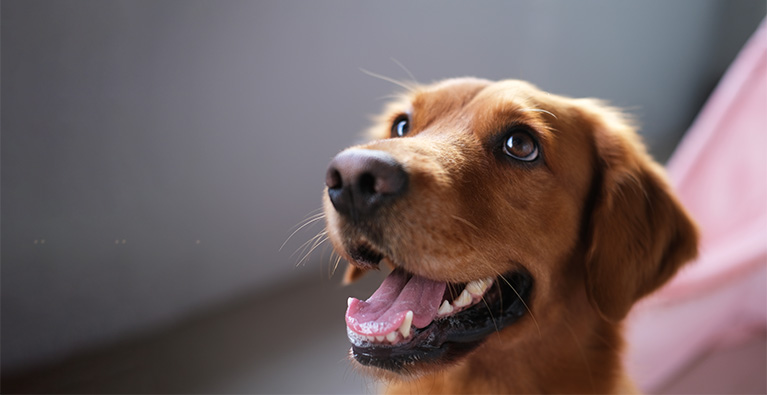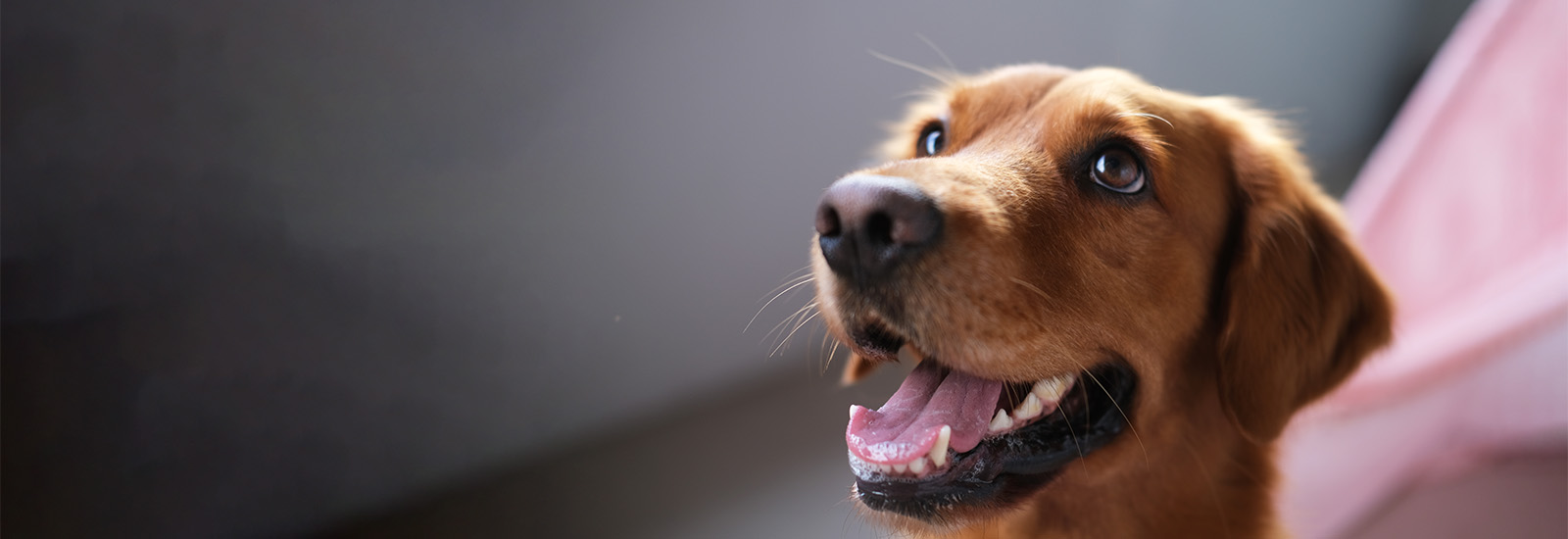Dental care for dogs
80 per cent of all dogs over the age of three have dental problems. In this interview, veterinarian Dr. vet. med. Simone Radicke reveals how you can avoid these problems and how to ensure perfect dental care.
In this animonda interview you will find out:
-
how a dog's teeth are structured
-
Causes and symptoms of dental disease in dogs
-
how dental problems can be treated
-
what dental care for dogs can look like
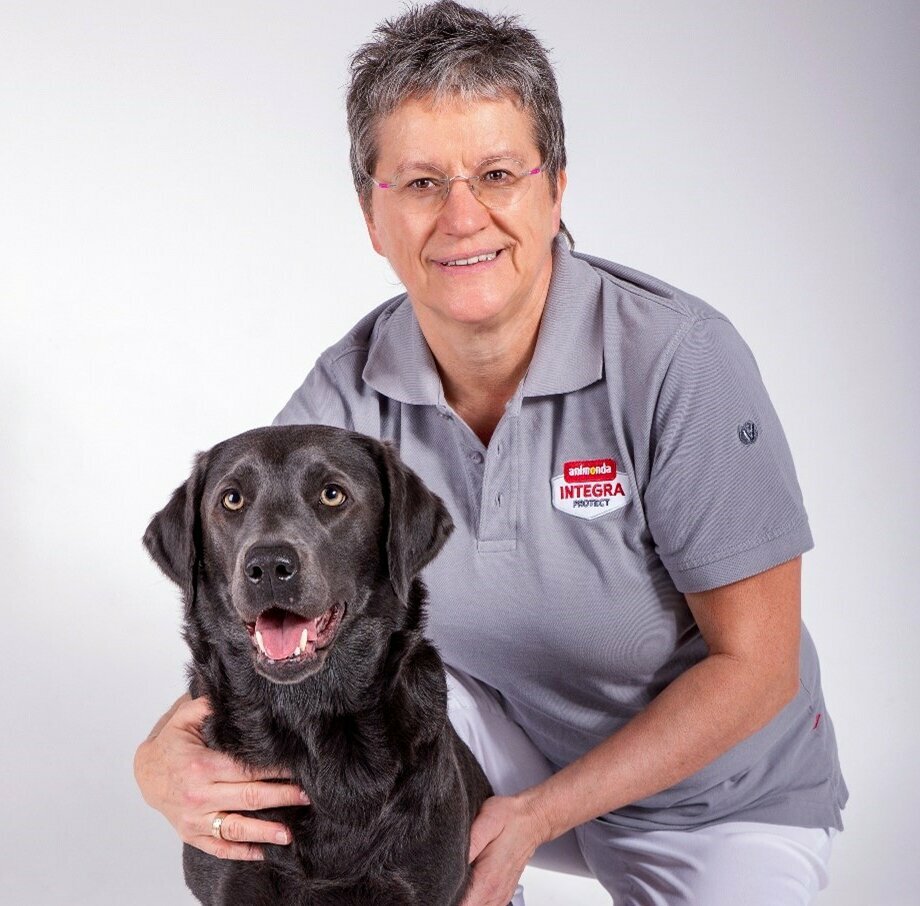
Healthy teeth are essential for a dog to survive
animonda: How are a dog’s teeth structured?
Dr. vet med. Simone Radicke: Puppies are born without any teeth. The incisors emerge first after 3 to 4 weeks, followed by the canine teeth (between the 3rd and 5th week) and the front molars (between the 4th and 12th week of the puppy’s life).
These milk teeth are replaced by adult teeth between 13 and 21 weeks of age. The incisors are replaced first (at an age of 3-5 months), then the canine teeth (5-7 months) and finally the molars (front molars: 4-6 months, rear molars: 4-7 months). This change of teeth usually takes place earlier in large breeds of dog than in smaller breeds. In general, puppies will have changed all their teeth by the age of 7 months.
Adult dogs then have 42 teeth:
- 12 incisors (6 in the upper jaw and 6 in the lower jaw)
- 4 canine teeth (2 in the upper and 2 in the lower jaw)
- 16 front molars (= “premolars”; 8 in the upper and 8 in the lower jaw)
- 10 rear molars (= “molars”; 4 in the upper and 6 in the lower jaw)
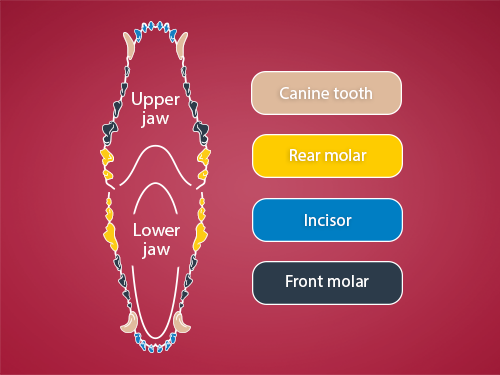
animonda: What are the functions of a dog’s teeth?
Dr. vet med. Simone Radicke: Dogs are carnivores, who originally had to hunt for their food. They caught and held their prey with their “canine teeth”. To fulfil this function, the canine teeth are fairly long and curved backwards. The food is broken up by the dog’s “carnassial” teeth. These are the largest molars: the rearmost premolar in the upper jaw and the foremost molar in the lower jaw. All of a dog’s premolars have very sharp edges and help the dog to tear up meat. Hard food (including bones) is ground up with the rear molars.
The front incisors have a number of different functions. On the one hand, with their sharp edges, they allow dogs to gnaw meat from bones. On the other hand, they are used for grooming by picking at the fur to remove fleas or ticks.
Causes and symptoms of dental disease in dogs
animonda: What are the most common dental conditions in dogs?
Dr. vet med. Simone Radicke: In contrast to humans, who often suffer from tooth decay, dental diseases in dogs primarily affect the gums and the periodontium (= periodontal diseases). This concerns in particular
- Tartar: deposits of minerals on the tooth
- Gingivitus: inflammation of the gums caused by plaque and tartar
- Periodontitis: inflammation of the periodontium caused by bacteria
- Root /periapical (root-tip) abscesses: bacterial infections at the root/root tip
The cause of these periodontal diseases is the formation of plaque. This is the build-up of food debris between the teeth, which then provides an ideal breeding ground for bacteria. As a result of this plaque, the normally smooth tooth surface becomes rough. If calcareous salts (= tartar) are formed from the minerals contained in the saliva, it is easy for them to adhere to the rough surface.
These hard, brownish-grey deposits are located particularly where the tooth meets the gum. As a result, bacteria is able to penetrate into the sector between the tooth and gums and cause inflammation of the gums (gingivitis). If this process continues to progress, deep, pus-filled infected pockets form. If these inflammatory processes spread to the periodontium, this is known as periodontitis. At this stage, loose teeth or even the loss of teeth can occur.
animonda: What consequences can dental diseases have?
Dr. vet med. Simone Radicke: Teeth are surrounded by the gums and suspended in the jawbone by means of flexible fibres. If the gums recede due to tartar and gingivitis or if the periodontium is damaged by an infection (periodontitis), the teeth may fall out.
But that’s not all. It is not just the mouth cavity that becomes diseased, but the entire body of the dog. There is a direct correlation between the dog’s oral health and its health in general. For example, the bacteria can spread to the bone and slowly destroy it. It can lead to fractures of the jaw. If the bacteria from the oral cavity enter the bloodstream and thus the entire body, inflammation centres develop, which are the cause of many common diseases.
For example, it has been scientifically proven that the bacteria accumulate on the inner walls of the coronary arteries and lead to heart disease. Depending on where the bacteria settle, this can also lead to joint or kidney disease. There is also mention of respiratory diseases if the bacteria enter the respiratory tract. Mediators produced by bacteria can trigger allergies and ear infections. The bacteria also affect the function of the pancreas. This can make it difficult to regulate the blood sugar levels of dogs with diabetes.
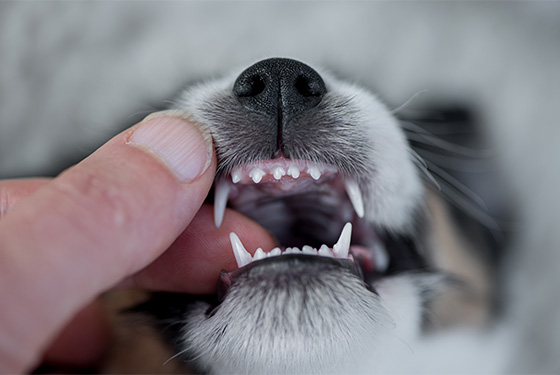
animonda: What are the signs of dental problems?
Dr. vet. med. Simone Radicke: Although dogs no longer have to hunt for their prey themselves, their teeth are still extremely important for food intake. If a dog only eats small amounts of food, is very selective about what it eats or only eats soft, tender food, this indicates dental problems. The dog will also lose weight as a result. In addition, some dogs will get diarrhoea because they are unable to break up the food properly. Selective ingestion of only a small quantity of soft food can lead to inadequate nutrition.
If a dog salivates excessively, rubs its muzzle against objects, scratches its mouth with its paws or keeps shaking its head, this may indicate dental problems. If it tilts its head and only chews on one side, this may also be a sign of dental problems.
Another sure sign is persistent severe bad breath, and here, a thorough examination of the mouth cavity is essential.
animonda: Is it normal for a dog to have bad breath?
Dr. vet. med. Simone Radicke: If a dog has just eaten some very odour-intensive food, such as tripe or horse manure, then it is perfectly normal for it to have bad breath. If, however, this persists for an extended period of time, the cause should be examined thoroughly. It is not uncommon for gingivitis or periodontitis to be the cause of the dog’s bad breath. An examination by a vet is always advisable, because kidney disease can also cause bad breath in dogs.
Treating dental problems in dogs
animonda: How is gingivitis (inflammation of the gums) treated in dogs?
Dr. vet med. Simone Radicke: If the gums are only slightly swollen and a little discoloured, applying an anti-inflammatory agent may be sufficient. At an advanced stage, the vet will also prescribe antibiotics. If tartar is the cause of the gingivitis, professional dental cleaning is required. This involves the complete removal of plaque and tartar under anaesthetic. This removes the breeding ground for the bacteria and the inflammation of the gums is therefore easier to treat.
animonda: How is tartar removed from a dog’s teeth?
Dr. vet med. Simone Radicke: The type of action required depends on how severe the tartar is. If only the canine teeth are affected and only very coarse tartar has accumulated, tartar removal forceps are suitable for breaking off the tartar. Finer tartar deposits are then removed from the tooth and the spaces between the teeth using a dental scaler. Not every dog will put up with this without any problems, which is why a mild anaesthetic is often required.
Ultrasonic treatment involves using a small chisel to transmit ultrasonic waves to the tooth. The tartar is broken up and rinsed away with water. Any pockets in the gums are also cleaned using a special rinsing solution. Finally, the tooth surface is polished to prevent plaque from re-accumulating within a short space of time.
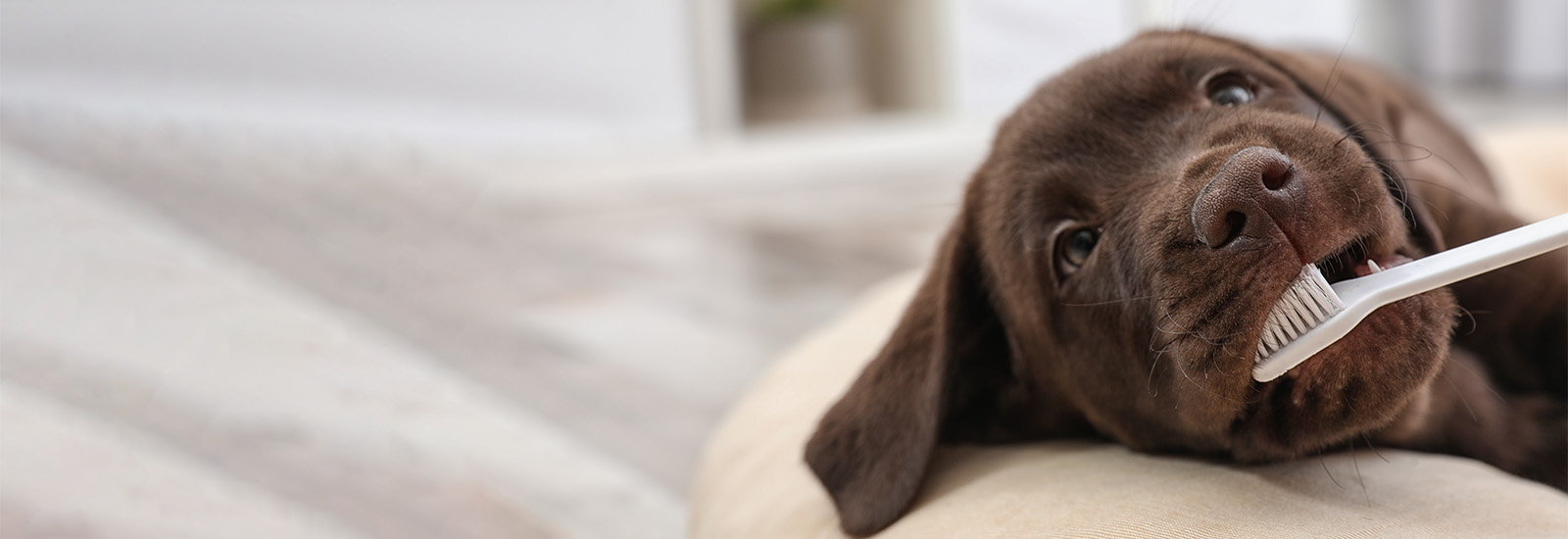
Dental care for dogs
animonda: What does dental care for dogs look like?
Dr. vet. med. Simone Radicke: Regular check-ups and preventive care can prevent tartar from forming. This includes brushing your dog’s teeth regularly, which you should get it used to early on in its life. You should have your pet’s teeth checked thoroughly by a vet at least once a year. Further measures may then be necessary.
There are various gels and sprays on the market that are designed to prevent the formation of tartar.
Specific ingredients in dog food and dental care sticks change the pH value of the saliva in such a way that the plaque is dissolved or does not form in the first place.
Finally, chew bones also contribute to dental care. Gnawing on dry cowhide or pig ears cleans the teeth mechanically. However, you should not give your dog too much, as these products are very high in energy and may lead to obesity.
animonda: Is it possible to remove tartar yourself?
Dr. vet. med. Simone Radicke: If your dog is very calm and is used to having its mouth and teeth taken care of, you can try to remove the tartar yourself using special dental scrapers (scalers).
However, it is best not to let it get that far in the first place. As soon as you notice the first formation of plaque, you should take action and remove it immediately. This can be done in the following ways:
- Using special dog toothbrushes and toothpastes, which often contain abrasive particles and are available in various flavours.
- By pulling a special finger cot over your index finger and using it to clean your dog’s teeth. The silver ions contained in finger cots are said to have an antibacterial effect.
- An electric tartar remover works like an electric toothbrush. It can be used to remove plaque and tartar and then to polish the teeth. Your dog must, however, become used to the vibrating movements and the noise.
- Dental wax should be applied to the teeth after every cleaning. This prevents plaque from building up again on the clean teeth and causing tartar.
If you are not familiar with how to carry out these measures or if your dog is too anxious, it is advisable to consult a vet. The vet should be contacted in all cases where the tartar has already penetrated below the gum line.
animonda: What influence does diet have on dental problems?
Dr. vet. med. Simone Radicke: In the past, it was assumed that wet food was associated with a higher risk of tartar formation. This was attributed to the teeth only being used moderately during food intake and a lack of mechanical cleaning of the teeth by the soft food. Today we know that other factors also have an influence on the formation of tartar. These include, for example, the spaces between the teeth, the pH value in the saliva and the influence of diet on intestinal health and the avoidance of pathogenic bacteria.
animonda: What chew products can help with plaque?
Dr. vet. med. Simone Radicke: Just a few hours after the dog has eaten, plaque forms on the teeth which, in combination with the salts in the saliva, turns into tartar. To prevent this, it is important to remove plaque regularly. This can be done by brushing the dog’s teeth or by giving it special chews with a dental care effect.
These can consist of bones, cow’s or pig’s ears, chews made from the extra-hard coffee root, bull’s pizzles or dried lung. There are also chew bones made of plastic that are filled with treats to ensure that the dog chews on them for as long as possible. Many of these chews do not have a balanced nutrient composition and are very high in energy, so the main food must be reduced to prevent obesity.
You may also like this
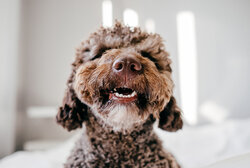
Dental problems in dogs
Well-kept teeth protect against tartar and bad breath
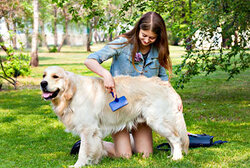
Moulting in dogs
How to help your dog during moulting

Dangerous food for your dog
You should not give these food items to your dog
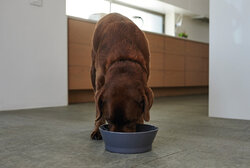
Feeding your dog properly
There are a few things to consider regarding everyday feeding
